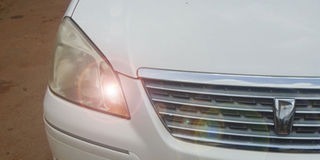When should you indicate

An indicator serves as a notice to other road users that you are turning. PHOTO BY Isaac Wafula
What you need to know:
- Despite the emphasis in driving schools to always use indicators, often times we remember a little too late or use the wrong one. But when should we indicate? Roland D. Nasasira explores.
- Also, much as double indicators are supposed to be used by siren vehicles like ambulances, Tibesigwa says that as an ordinary driver in a private vehicle, you may also use them to communicate to other road users to allow you use the road abnormally in emergency situations when you are for example rushing a patient to the hospital and need them to create a path for you.
When you should indicate
Mathias Tibesigwa, a Driving Instructor, with Ddembe Driving School ,explains that when on the road, you should be able to indicate at least 10 meters before you reach your turning point. This, Tibesigwa reasons should be done to create a time allowance to the motorist driving behind you and also those driving from the opposite sides, say at a junction, to realise that you have intentions to turn.
Why you should indicate
“An indicator serves as a notice to other road users that you are turning. When you indicate when you are already turning or fail to indicate at all, the motorist driving behind you might ram into your car and crash you if they were driving at a fast speed. When you indicate that you are turning, you create a notification to the driver behind you that he or she needs to keep a distance,” Tibesigwa advises.
He says their usage is paramount in five key areas; when turning left, turning right, overtaking, interchanging lanes and stopping the motorist driving behind from overtaking you more so on highways or on a busy road.
To accept to be guided by vehicle indicators, Tibesigwa advises that motorists should familiarise themselves with the pre-turning activity. This involves careful usage of side mirrors and the driving mirror to ensure that no other motorist is inconvenienced especially the one following you, using road signals and manoeuvring to turn to where you indicate.
According to the Annual Crime and Traffic/Road Safety Report of 2013, in the nature of accidents with respect to their causes, human factors or error accounts for 81.6 percent of road accidents. The report advises that the main emphasis of road safety strategies must therefore be on improving road user behaviour, deducing that the greatest potential for reducing accidents lies in sensitising road users to act more responsibly.
Israel Wambesyo, the Assistant Supritendant of Police and Deputy Traffic Commander Kampala Metropolitan says that much as the institution has not registered accidents that result from poor usage of motor vehicle indicators, they carry out sensitisation among the public about road safety awareness.
“Much as we expect motorists to be qualified and professional when on the road, we have found ourselves in situations where we convene lectures to them (motorists) to always follow road and traffic safety rules and signs to reduce on accidents that result from human error,” Wambesyo explains.
Double indicators
Double indicators as part of the vehicle communication system, Tibesigwa says, are used when your vehicle develops a mechanical breakdown that you need to communicate to other road users about.
Also, much as double indicators are supposed to be used by siren vehicles like ambulances, Tibesigwa says that as an ordinary driver in a private vehicle, you may also use them to communicate to other road users to allow you use the road abnormally in emergency situations when you are for example rushing a patient to the hospital and need them to create a path for you.




